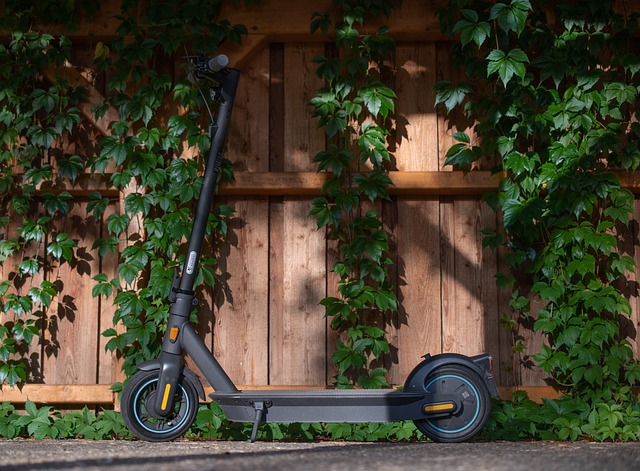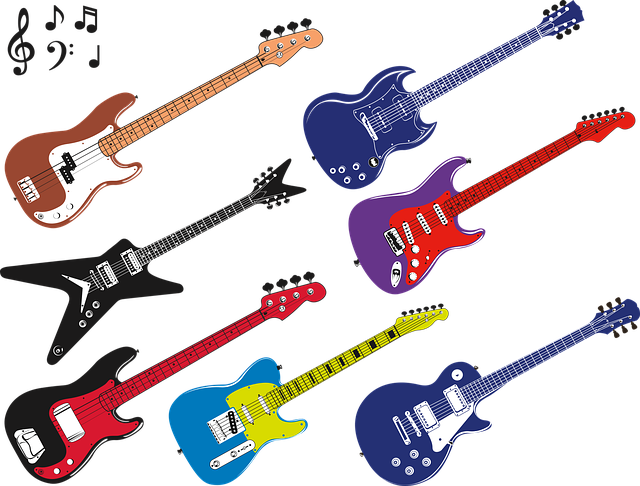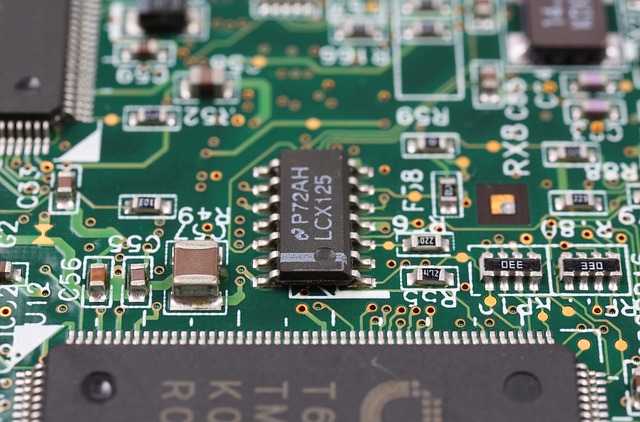OneWheel electric boards, featuring advanced gyroscopic technology and lightweight design, have revolutionized urban transport. These self-balancing unicycles offer eco-friendly, efficient, and thrilling short-distance commuting with hand gesture control. Their unique self-stabilizing systems utilize sensors and algorithms for real-time balance adjustments, enabling seamless turning and speed maintenance. With brands like InMotion and Gotway leading the way, OneWheel boards provide both convenience and exhilarating experiences while also finding practical applications in various industries through autonomous vehicle technology. To ensure optimal performance and longevity, regular cleaning, inspection, storage conditions, and maintenance checks are recommended.
“Unleash your adventurous spirit with the revolutionary OneWheel electric board—a self-balancing technology marvel. This compact, single-wheeled wonder has taken the world by storm, offering an eco-friendly and thrilling mode of transportation. Our comprehensive guide explores the intricate physics behind its self-balancing core concept, delving into how these systems enable seamless navigation. From benefits that enhance user experience to safety considerations and real-world applications, we uncover why OneWheel boards are transforming personal mobility. Prepare for a journey through the future of balancing technology.”
Understanding OneWheel Electric Boards: A Brief Overview

OneWheel electric boards, also known as self-balancing unicycles or hoverboards, are innovative transportation devices that have gained significant popularity in recent years. These compact and portable vehicles use advanced gyroscopic technology to maintain balance, allowing riders to glide through the streets with ease. The OneWheel board consists of a single wheel surrounded by a protective frame, typically made from lightweight yet durable materials like carbon fiber or aluminum. Riders sit on a comfortable seat, control their speed and direction using hand gestures, and enjoy a unique, exhilarating experience.
These electric boards offer an eco-friendly alternative to traditional modes of transport, as they are powered by electricity rather than gasoline. They provide a fun and efficient way to commute short distances, with some models boasting impressive speeds and ranges. Whether for leisure or commuting, OneWheel electric boards offer a one-of-a-kind experience that combines the thrill of riding with the convenience of modern technology.
The Core Concept of Self-Balancing Technology

Self-balancing technology, as exemplified by the OneWheel electric board, revolves around a core concept of maintaining stability through advanced sensor systems and proprietary algorithms. This innovative approach allows for a unique and dynamic riding experience, where the rider’s weight shift and movement are interpreted in real-time by sensors embedded within the device. By continuously adjusting its center of gravity, the OneWheel can keep itself upright, even at high speeds, eliminating the need for traditional steering or balance aids.
The technology behind self-balancing vehicles is a marvel of modern engineering, combining elements from robotics, mechatronics, and artificial intelligence. These boards learn from rider input, adapt to terrain changes, and provide a level of control that’s both intuitive and responsive. This not only enhances safety but also opens up new possibilities for efficient urban transportation, making daily commutes more enjoyable and sustainable.
How Self-Balancing Systems Work in OneWheel Boards

Self-balancing systems are what make OneWheel electric boards an innovative and unique form of transportation. These systems use a combination of sensors, gyroscopes, and advanced algorithms to keep the board stable while in motion. The primary component is a main motor coupled with a mechanical system that allows for real-time adjustments to maintain balance. When the rider leans forward, the sensor array detects this shift and activates the motor to adjust the tilt, ensuring a smooth and controlled experience. This technology enables riders to navigate twists and turns effortlessly while maintaining speed, making OneWheel boards an exhilarating and efficient way to get around.
The self-balancing mechanism in OneWheel boards is designed to respond to rider input almost instantaneously. As the board moves, the gyroscopes continuously monitor its orientation, comparing it to the desired state. Any deviation triggers a correction, preventing the board from toppling over. This dynamic balance allows riders to focus on steering and maneuvering without the constant need for physical adjustments, making the experience both hands-free and exhilarating.
Benefits and Advantages for Users

Self-balancing technology, popularized by devices like the OneWheel electric board, offers users a unique and efficient form of transportation. The primary benefits lie in its compact design and intuitive control system. This innovative approach allows for easy maneuverability in tight spaces, making urban commuting a breeze. With just a slight shift in body weight, riders can steer and change direction seamlessly, ensuring a smooth and responsive experience.
Additionally, these self-balancing devices promote an active lifestyle by encouraging physical engagement. Riding a OneWheel electric board requires balance and coordination, providing users with a fun and effective workout. It’s an efficient way to stay fit while navigating city streets, appealing to those seeking both convenience and health benefits in their daily routines.
Challenges and Safety Considerations

Self-balancing technology, as seen in OneWheel electric boards, offers a unique and thrilling way of transportation, but it comes with its fair share of challenges and safety considerations. As these innovative devices navigate through various terrains and speeds, ensuring the well-being of riders is paramount. One major concern is stability; balancing on a self-propelled board requires constant adjustments and quick reflexes, especially for beginners. This is where advanced sensors and algorithms play a crucial role in detecting and correcting any wobbles, making the experience safer and more accessible.
Additionally, safety features like speed limits, emergency stop mechanisms, and impact-sensing technology are essential to mitigate potential risks. With high-speed travel comes an increased risk of accidents, so robust safety measures are vital for both riders and pedestrians. Regular maintenance and proper usage guidelines are also necessary to address mechanical failures and prevent mishaps.
Popular OneWheel Brands and Their Self-Balancing Innovations

In the realm of self-balancing technology, OneWheel electric boards have emerged as a game changer, revolutionizing personal transportation. Brands like InMotion and Gotway have been at the forefront of innovation, crafting sleek and powerful devices that combine the freedom of mobility with cutting-edge engineering. InMotion, known for its high-performance models, offers a range of OneWheel electric boards tailored for various riders, from beginners to seasoned enthusiasts. Their advanced stabilization systems ensure a smooth ride, even on uneven terrain.
Gotway, another leading manufacturer, has also left its mark in the industry with innovative designs and features. Their OneWheels are celebrated for their exceptional maneuverability and efficient battery life, making them ideal for urban commuting and off-road adventures alike. As these brands continue to push boundaries, self-balancing technology evolves, promising a future where electric boards like OneWheel become an integral part of our daily lives, offering both convenience and thrilling experiences.
Real-World Applications and Use Cases

Self-balancing technology, famously exemplified by the OneWheel electric board, has found its way into various real-world applications. This innovative design allows users to maintain balance while navigating through different terrains, making it a popular choice for personal transportation and outdoor adventures. From urban commuting to off-road exploration, the OneWheel offers an efficient and eco-friendly mobility solution.
In addition to recreational use, self-balancing technology has numerous practical applications in industries like logistics and delivery services. Autonomous vehicles equipped with this technology can navigate narrow streets, complex parks, and challenging landscapes, optimizing delivery routes and reducing operational costs. Furthermore, its compact design makes it suitable for indoor use in warehouses and storage facilities, enhancing efficiency in inventory management and material handling.
Future Prospects and Emerging Trends

The future of self-balancing technology looks bright, with continuous innovation and emerging trends shaping the way we move. One notable development is the growing popularity of the OneWheel electric board, a compact and portable personal transportation device that balances itself using advanced gyroscopic and sensor technology. This trend hints at a possible shift towards more eco-friendly, efficient, and convenient modes of urban mobility.
As technology advances, expect to see further integration of AI and machine learning algorithms, enhancing stability, safety, and performance. Additionally, the focus on customization and user experience will likely lead to personalized settings and intuitive interfaces, making self-balancing devices even more accessible and appealing to a wider audience.
Maintenance and Care Tips for Optimal Performance

To ensure optimal performance and longevity of your OneWheel electric board, proper maintenance and care are essential. Regular cleaning and inspection are key; keep the board free from dust, dirt, and debris to prevent any damage or wear. Use a mild detergent and warm water for deep cleaning, especially on the contact points and wheel hubs.
Storage is another critical aspect. Always store your OneWheel in a dry, cool place away from direct sunlight and extreme temperatures. Avoid leaving it outdoors or in damp environments as this can accelerate degradation of components. Additionally, ensure the board is fully charged before storing it to prevent battery drain. Regularly check tire pressure and perform basic maintenance checks to keep everything running smoothly.
